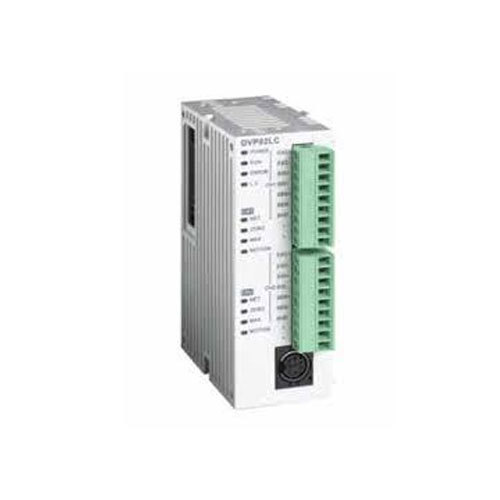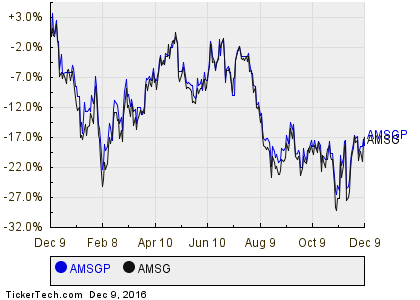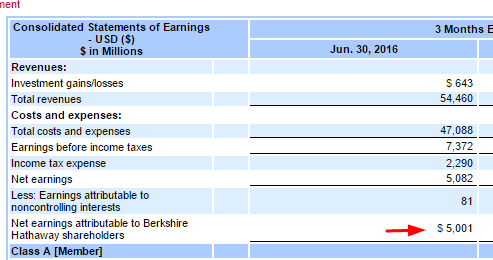FM&E_2: LESSON 31 COST OF OPERATION OF MACHINERY FOR OPTIMUM USE


The company can also decide to include them as part of the cost. If these costs are incurred to purchase materials for long-term storage such as seasonings, the costs will be recorded as material costs. The assumed interest on the owned capital and the actual interest on the borrowed funds are recorded as administrative and administrative expenses. Fixed costs are expenses that do not change irrespective of the number of units sold. Revenue is the price for which products are sold minus variable costs like materials, labour, etc.
Is depreciation a fixed asset?
Depreciation represents the periodic, scheduled conversion of a fixed asset into an expense as fixed asset is used during normal business transactions. Since the asset is part of normal business operations, depreciation is considered as revenue expense.
If the information is not available it may be calculated on the basis of 2 per cent of the average purchase price per annum. The charge for housing is taken as 1 per cent of the average purchase price of the machine. Yes, depreciation is considered to be a fixed cost in business. This cost remains the same every period and is not impacted by the output.
Hence, companies which don’t use the depreciation expense in their accounts will incur front-loaded bills and extremely variable financial outcomes. Thedouble-declining balance methodology is one other accelerated depreciation method. After taking the reciprocal of the helpful life of the asset and doubling it, this fee is applied to the depreciable base, e-book value, for the rest of the asset’s anticipated depreciation fixed or variable life. This methodology is the simplest to calculate, results in fewer errors, stays the most consistent and transitions well from company-prepared statements to tax returns. Neither side of this journal entry affects the revenue assertion, the place revenues and expenses are reported. In order to maneuver the cost of the asset from the stability sheet to the income assertion, depreciation is taken regularly.
All You Need to Know About Business Cycles
Common expenses means expenses which are ordinary and are needed in the day to day life of business like printing and stationery, packaging, etc. Expenses which are fixed and are not dependent on any other variant like production or sales are fixed expenses. For example; rent, electricity expense, depreciation, salary, etc. Variable expenses are those expenses which keep changing and depend on other variants. For example; packaging expenses, wages, transportation expenses, advertising and selling expenses, etc.
Why is depreciation a fixed asset?
Depreciation of fixed assets is an accounting term that is used to represent how much of an asset's value has been used up over time. Depreciation is, therefore, a calculated expense, which leads to a decrease in earnings.
The total fixed cost is the sum of depreciation , interest on investment and Taxes, Insurance and housing charges. Business utility expenses are the cost incurred from internet, electricity, waste disposal, sewage etc. The utility expenses differ, however, business bodies have fixed-cost contracts where an agreed amount is paid every month. Anything that you have purchased for your business that will assist your company in generating income is eligible to be depreciated. It is also possible to depreciate a rental property if it generates revenue for your company.
However, the minimum selling price of a product in any market must at least cover prime costs and variable overhead costs. The corresponding fixed overhead may or may not recover if it is not practical to recover. Such fixed overhead can be recovered from sales in a more favourable market. With all the above methods, prices are at a certain level and cost movements are assumed to be caused solely by volume changes.
What are the different types of indirect costs related to manufacturing overhead?
The cost comparison of products with substantial value differences is inappropriate without interest, as the amount of capital required for each product varies significantly. The treatment of interest on capital in costing is a controversial issue. Such costs are neither recurring costs nor the usual characteristics of labor. Charges depreciation every year at a fixed rate for depreciation depreciation . In order to take on investors or debt to fund your firm, a break-even analysis is frequently required.
Is depreciation a fixed or variable cost?
Depreciation is one common fixed cost that is recorded as an indirect expense.
Variable costs also called operational costs vary in proportion to the amount of machine used. It includes repair and maintenance, fuel, oil or lubrication and labour costs. Cost can be classified in several ways such as fixed cost or variable cost, depending on its nature. One of the most popular methods is classification according to fixed costs and variable costs.
For example, companies can take a tax deduction for the cost of the asset, meaning it reduces taxable income. Depreciation expense shall be decrease or greater and have a higher or lesser effect on revenues and belongings based mostly on the items produced within the interval. The alternative of depreciation method can impression revenues on the income assertion and property on the steadiness sheet.
The break-even analysis is used to answer many questions of the management in day-to-day business. Iv) Without an effective accounting team, it is important the analysis could yield incorrect results. Fixed costs are costs which are determined when an idea goes into the production stage and depends on the level of production. Fixed costs include rent, salaries, taxes, interests, labour, depreciation and other operational costs. These costs are free from production and must be incurred even in the absence of production. To determine the profitability of one’s business, it is important to calculate the break-even point.
I. When material cost is the main item of the main cost and the time factor is not fully considered. There is no distinction between the production of manual workers and the production of mechanical workers. If the worker is paid on a piece-by-piece basis, the time element is completely ignored. If the wage rate does not fluctuate, that is, the wage rate and payment method are the same for the majority of interested workers. Under-absorbed or over-absorbed overhead balances are closed by adjusting gross profit.
Three Main Methods of Calculating Depreciation
In business accounting, depreciation is a method used to allocate the cost of a purchased asset over the time frame the asset is anticipated to be of use. That deferred tax asset will be reduced over time till the reported earnings beneath GAAP and the reported income to the IRS align on the end of the straight line depreciation schedule. Some of the common fixed costs consist of employee salaries, interest, rent, insurance, lease, insurance, utility payments, phone service, advertising costs, amortization, and more.
This is a cost that tends to follow the level of activity . Variable overhead costs fluctuate in total in direct proportion to production. These costs per unit are relatively constant as production changes.

Expenses are brought down in the profit-and-loss account by either of the two accounting methods chosen by the business. The cost of machine depreciates much faster in the first few years than in the later years. Thus, companies must regulate an asset’s value to its the web remaining worth. An asset’s net book worth is the unique buy cost subtracted by the asset’s amassed depreciation, the whole depreciation expense from all previous intervals. Instead of realizing the complete value of the asset in 12 months one, depreciating the asset permits companies to spread out that price and generate revenue from it.
Physical costs
Depreciation may have a bad connotation, but it may be a boon to your company if you know how to use it effectively. The depreciation value impacts your company’s balance sheets and may also affect your net income and profit. The more you know about depreciation and how to utilise it effectively, the more money you’ll save in the long run. Here are the fundamentals of depreciation, depreciation meaning, and how the various forms of depreciation are computed. If the overhead absorbed is less than the actual overhead incurred during the accounting period, it is said to be absorbed.
Depreciation expense is the periodically allocated price of an asset’s unique purchase value over the service life of the asset. Sales tax and road tax can be distributed over the life of the machine. Farm machinery is sometimes insured against loss by theft or damage. Actual amount paid or to be paid annually for insurance and annual taxes if any should be charged.
- Examples of other fixed costs are insurance, depreciation, and property taxes.
- When direct labor accounts for the majority of total production costs.
- Indirect material costs are mostly related to consumables like machine lubricants, light bulbs , and janitorial supplies.
- Under the prime cost method, recovery is calculated by dividing budgeted overhead costs by the sum of direct material costs and direct labor costs for all products in the cost center.
- It helps firms avoid main losses in the yr it purchases the fastened property by spreading the price over several years.
This net balance is nothing but the value of asset that remains after deducting accrued depreciation. This graph is deduced after plotting an equal amount of depreciation for each accounting period over the useful life of the asset. This helps in getting an entire picture of the revenue generation transaction. The models-of-production method is calculated based on the units produced within the accounting interval. Although the rate remains constant, the dollar worth will lower over time as a result of the rate is multiplied by a smaller depreciable base each interval. Therefore, depreciation is taken into account a non-cash charge since it does not symbolize an precise money outflow.
Depreciation for accounting purposes refers the allocation of the cost of belongings to intervals by which the property are used . So the charges for taxes, insurance and housing can be taken as 3 % per year of the average cost of the machine. Depreciation – It is the reduction in value of the machine with the passage of time. In the usual situation with field machines being operated only a few days in a year year, obsolescence is the most important factor affecting the depreciation . A machine may become obsolete because of the development of improved models, changes in farm practices etc. These articles, the information therein and their other contents are for information purposes only.
In using the declining stability method, a company reviews larger depreciation expenses during the earlier years of an asset’s helpful life. Depreciation expense is a non-cash charge in opposition to revenue, which permits corporations to set aside part of the revenue as funds for future asset alternative. Without expenses of depreciation expense, the portion of revenue might have been inappropriately used for other purposes.
Rebates are usually offered for early payments and are therefore included in the cash discount. C) Insurance premiums at the time of purchase may be added to the price of the purchased raw material or asset. B) Warehouse inventory insurance costs are treated as logistics expenses. If interest is not taken into account, cost comparisons can be misleading. For the purpose of cost comparison, the former merchant needs to add interest on the waiting period.
These remain constant in various small ranges of output, but the activity increases in discontinuous amounts as he moves from one range to the next. Examples include wages for employees in the employee cafeteria and salaries for supervisors. The second type shows the semi-variable cost in which the variable factor works after a certain level of activity, as shown in the graph above. The first type shows the semi-variable cost in which the variable elements operate at all levels, as shown in the graph below.
Following figures are available for one month of 25 working days of 8 hours each day. The system of standing order numbers must meet the needs of concern. To avoid increasing the cost of clerical work, do not go into too much detail. The classification should not be too broad so that it loses clarity and is useless for administrative purposes.
Is depreciation a fixed asset?
Depreciation represents the periodic, scheduled conversion of a fixed asset into an expense as fixed asset is used during normal business transactions. Since the asset is part of normal business operations, depreciation is considered as revenue expense.







